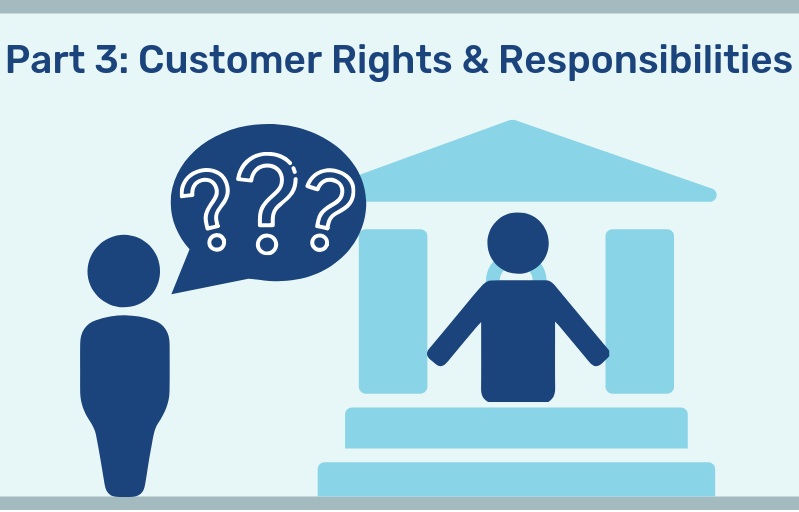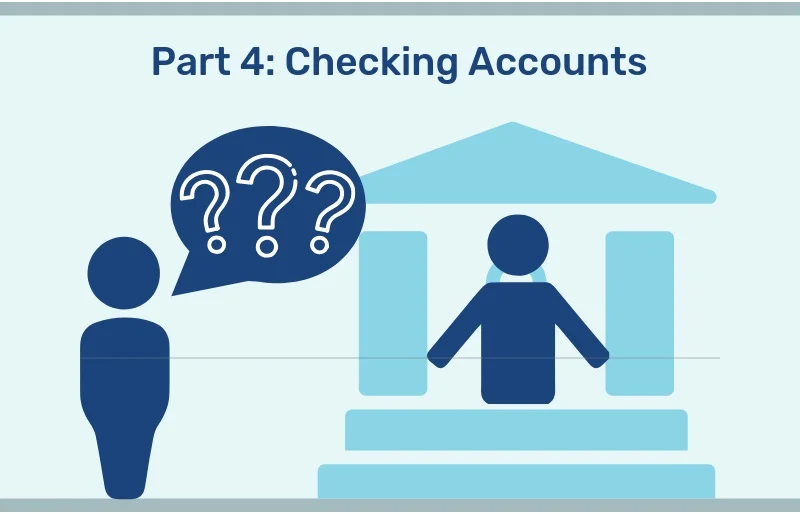Being a Smart Banking Consumer: Consumer Rights and Responsibilities
/Banks are a place for us to handle our checking, savings, and possibly a loan. Beyond that, for many of us banking is a black hole. Why banks do what they do and how they do it is little understood outside of the banking community.
The more information you have, the better consumer you can be.
Being a Smart Banking Consumer
(Part 3): Consumer Rights & Responsibilities
Now we’ll deal with the your rights and responsibilities as the account holder. These are set out in the agreements you sign and/or agree to when you open an account. The most significant agreement is called the Deposit Agreement. This document can be up to 40 or 50 pages of what the bank must do, by law, when certain situations occur relating to your account.
Here are some of the most important responsibilities you have, as a customer.
Deposits to your Account
When you make deposits to your account, the bank will check to determine if the deposit amount is correct. If you make the deposit in-person, the teller will check to ensure the amount is correct. If you use the ATM, the ATM system will determine the correct amount. If you use the night deposit, two employees will cross-check to ensure that the deposit amount is correct.
If the deposit amount is not correct, the bank will notify you of the correct amount. Normally, you have up to one year to notify the bank that a deposit amount is not correct, though a year is not standard. The deposit agreement will state the bank’s specific time frame that it will give you to change the deposit amount.
Changing your Account Type
As a customer, you are responsible for using your account appropriately. If you don’t, the bank can change your account to another type of account. For example, interest-bearing checking accounts known as money market accounts have a limit of only six (6) withdrawals a month under federal regulations. If you exceed the six (6) monthly withdrawals three or more times in a twelve month period, the bank must notify you that you have exceeded these limits and will change your account to a non-interest-bearing checking account. This limit of six withdrawals a month is also true for savings accounts. The bank may also change your account type if the bank stops offering the type of account that you are using.
Obtaining Background Information
As a customer, it is your responsibility to maintain your account legally. The bank may obtain background information in order to determine whether to open or maintain your account. For example, if a bank suspects that you are, or will possibly be conducting unlawful activity such as internet gambling, it may obtain such records as credit reports, public records, and motor vehicle records to help it decide to whether open or maintain your account.
Privacy
As a customer, you have certain privacy rights. When you open an account, and every year after, you will receive the bank’s privacy policy. This policy lists when the bank can share information. Without your consent, the bank will not share information about your account, with some exceptions.
Sharing of your information is generally allowed under federal and state law. The bank can share your information with third parties that provide the bank with its systems, such as its basic banking system or wire transfer system. These providers need to have access to your account in order to provide the service to the bank. The bank, however, is not allowed to share information with its affiliates that market products to the public, such as investment or insurance products.
Next up in part 4, we’ll take a closer look at different types of bank accounts.
Whatismyhealth © 2019


























A checklist of common documents related to deductions and credits that you will need when preparing to file your taxes for last year.